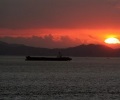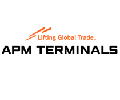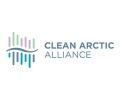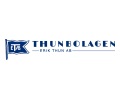Towing and mooring equipment update January 2024 – Preparation for SOLAS Regulation II-1/3-8

Starting 1 January 2024, SOLAS Regulation II-1/3-8 will come into effect, introducing updates to towing and mooring. This includes extended regulatory scope on towing and mooring arrangement and equipment for both new and existing ships. This newsletter summarizes the revised SOLAS regulations.
The IMO Maritime Safety Committee (MSC) has issued new requirements related towing and mooring equipment. The requirements are incorporated in the amendments to SOLAS Regulation II-1/3-8 and will come into force on 1 January 2024. The IMO has also issued interpretations on the scope for review by the administration or Recognized Organization (RO).
New Regulations and guidelines

The amendments to SOLAS II-1/3-8 introduce new requirements and guidelines for the strength, arrangement, and maintenance of towing and mooring equipment. These are detailed in the following documents (see also “References”):
- IMO Res. MSC.474(102)/SOLAS II-1/3-8, “Towing and mooring equipment”
- IMO MSC.1/Circ.1175/Rev.1, “Guidance on shipboard towing and mooring equipment”
- IMO MSC.1/Circ.1619, “Guidelines on the design of mooring arrangements and the selection of appropriate mooring equipment and fittings for safe mooring”
- IMO MSC.1/Circ.1620, “Guidelines for inspection and maintenance of mooring equipment including lines”
- MSC.1/Circ.1362/Rev.2 – the interpretation approved by the IMO; includes several interpretations relevant to the new requirements.
Key definitions

To better understand these regulations, some key definitions are explained:
- Safe Working Load (SWL) means the safe load limit of shipboard fittings used for mooring operations in harbours or similar sheltered waters.
- Safe Towing Load (TOW) means the safe load limit of shipboard fittings used for normal and other towing.
- Ship Design Minimum Breaking Load (MBLSD) means the minimum breaking load of new, dry mooring lines for which shipboard fittings and supporting hull structures are designed to meet mooring restraint requirements.
- Line Design Break Force (LDBF) is the minimum force at which a new, dry, spliced mooring line will break. It is for all synthetic cordage materials.
A. Key requirements for all ships (effective from 1 January 2024)
Starting 1 January 2024, all ships must maintain management plans for inspection and maintenance of mooring equipment onboard according to the MSC.1/Circ.1620 guidelines.
For issuance of Cargo Ship Safety Construction Certificate or Passenger Ship Safety Certificate in 2024, the following requirements will be confirmed by the RO/administration during the first annual survey:
Management plans for inspection and maintenance of mooring equipment:
- Procedures for mooring operations, inspection, and maintenance of mooring equipment, including mooring lines.
- Procedures to allow the identification and control of mooring lines, tails and associated attachments.
- Periodic inspection of mooring lines, mooring line tails and associated attachments as part of the onboard maintenance plan or equivalent maintenance management system.
- Manufacturersʹ criteria for replacement of mooring lines should be available.
- Records of the original design concept, equipment, arrangements, and specifications should be available on board.
Markings on mooring fittings:
Ships with the keels laid on or after 1 January 2007 must clearly mark each fitting or item of equipment, including bollards, fairleads, rollers, and mooring winches, with any limitations associated with its safe operation.

The records of inspection and maintenance of mooring equipment
The records of inspection and maintenance of mooring equipment, inspection and replacement of mooring lines, since the last periodical survey, should be kept updated and available on board and will be subject for periodical survey.
Practical impact for existing ships
Ship operators will need to review their existing safety management systems related to mooring lines and mooring equipment onboard and check compliance with MSC.1/Circ.1620. Due to the required documentation, MBLSD should be established as the replacement lines should have a LDBF 100-105% of MBLSD. MBLSD might be determined based on mooring arrangement plans. Also, the number of mooring lines onboard should match the original concept.
For ships with the keels laid before 1 January 2007 and without appropriate documentation, owners may establish the MBLSD for mooring based on the safe working load of mooring equipment provided on board. If no safe working load is specified, owners are advised to check the strength of mooring equipment and their supporting hull structure based on MSC.1/Circ.1175/Rev.1 and determine MBLSD based on the actual capacity of mooring equipment and the supporting hull structure.
Practical impacts for yards
In the case of newbuilds, designers and shipbuilders should ensure that all the necessary technical data, maintenance instructions, mooring rope details, and certificates are provided. This information will assist owners in creating their maintenance and inspection procedures.
B. Key requirements for new ships (built after 1 January 2024)
All new regulations will apply to new ships contracted on 1 January 2024 or later. The design of the mooring arrangement, including the selection of mooring lines, shall follow the guidelines MSC.1/Circ.1175/Rev.1 and MSC.1/Circ.1619, which aim to cover all aspects of occupational safety and safe mooring of the ship. The following regulations will be followed and confirmed by the RO/Administration during the ship’s delivery. Specifically:
Design according to guidelines MSC.1/Circ.1619 and record of deviations:
Ships of 3,000 GRT and above shall be designed according to MSC.1/Circ.1175/Rev.1 and MSC.1/Circ.1619. Designers need to confirm that the mooring arrangement meets the guidelines MSC.1/Circ.1619. In case of deviations from these guidelines, they should be documented along with the implementation of suitable safety measures.

Mooring lines and fittings:
Technical specification documents of the mooring lines provided onboard must include information such as the number of mooring lines, recommended minimum diameters (D) for fittings in contact with mooring lines, Line Design Break Forces (LDBF) for mooring lines, and properties related to the bend radius (D/d ratio) of mooring lines. LDBF should fall within the range of 100-105% of MBLSD , or 105% of SWL if higher, when selecting mooring lines. The selection of mooring lines and fittings should consider the diameter (D) of surfaces of mooring fittings in relation to the mooring line diameter (d) (i.e., the D/d ratio) to minimize potential strength loss caused by the mooring line bending.
Mooring winches:
The holding capacity of winch brakes should not exceed 100% of MBLSD. Mooring winch brakes should enable the reliable setting of the operational brake rendering load.
Practical implications for newbuilds
The new guidelines (MSC.1/Circ.1619) will demand ship owners’ attention during the ship’s ordering and design stage. It could involve selecting mooring lines and ensuring that safety measures for any deviations, as permitted by MSC.1/Circ.1619, are adequate during operation.
Compliance on mooring
DNV offers a voluntary class notation Mooring, DNV-RU-SHIP Pt.6 Ch.5 Sec.25, confirming compliance with SOLAS II-1/3-8 and related guidelines MSC.1/Circ.1619 and MSC.1/Circ.1620. Also, a voluntary Statement of Compliance with MSC.1/Circ.1620 is available for existing ships untill 1 January, 2024. After this date, compliance with MSC.1/Circ.1620 will be covered by the Safe Construction Certificate. Further information can be found on the DNV safe mooring website.
Source: DNV, https://www.dnv.com/news/towing-and-mooring-equipment-update-january-2024-preparation-for-solas-regulation-ii-1-3-8-248367?

 Hellenic Shipping News Worldwide Hellenic Shipping News Worldwide, Online Daily Newspaper on Hellenic and International Shipping
Hellenic Shipping News Worldwide Hellenic Shipping News Worldwide, Online Daily Newspaper on Hellenic and International Shipping





















 PG-Software
PG-Software